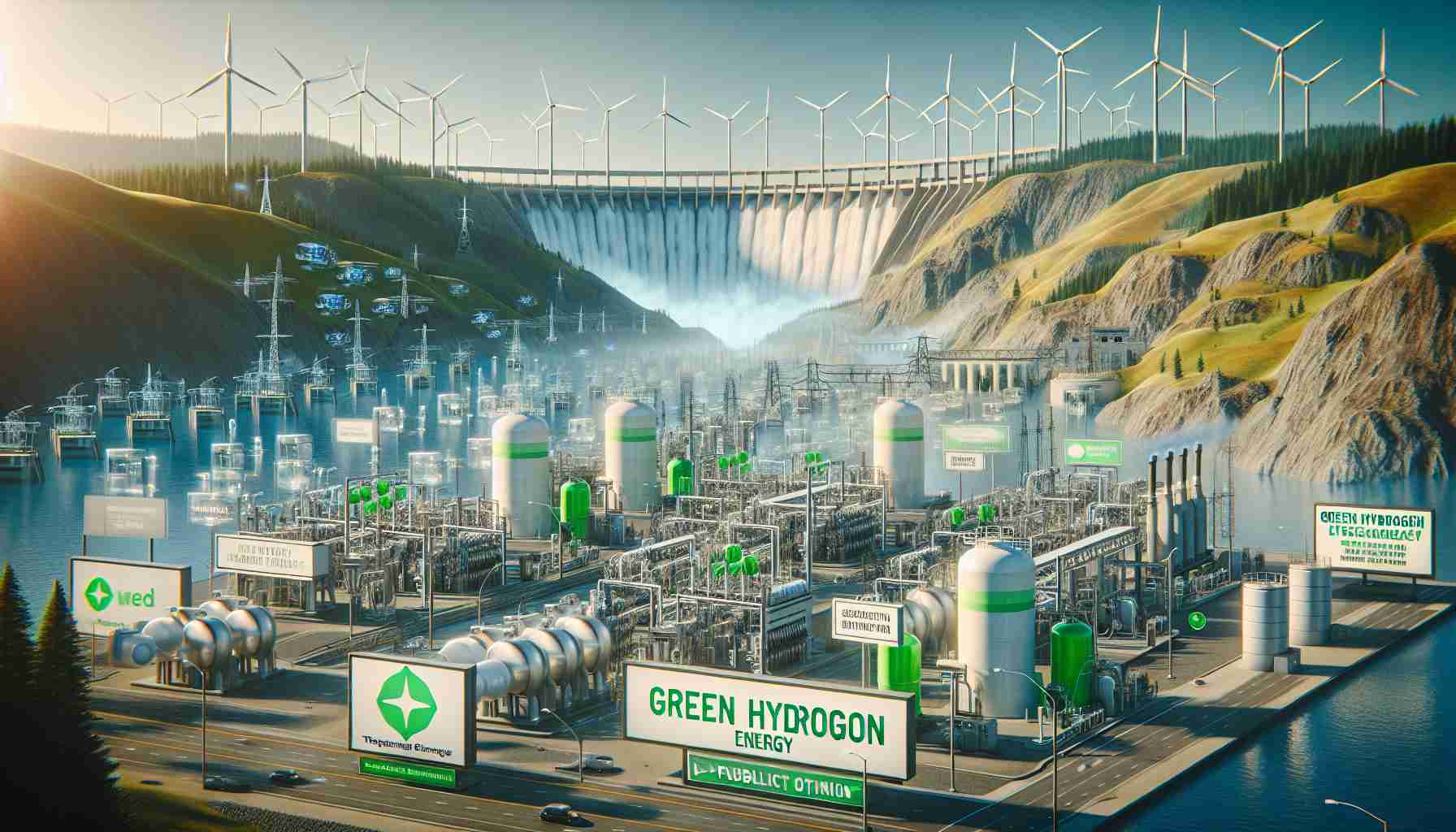Exploring the Green Hydrogen Revolution in Washington
The Washington State Department of Ecology has opened the floor for public input on a new programmatic environmental impact statement focused on green hydrogen production and storage. This comprehensive statewide analysis seeks to identify and address the environmental implications of energy facilities that utilize green hydrogen.
As traditional electricity generators move away from fossil fuels, innovative renewable sources like wind and solar are gaining traction in Washington. This transition aims to combat escalating climate change challenges in the region. Recently, the department also highlighted the environmental challenges posed by utility-scale solar and onshore wind projects.
Green hydrogen is emerging as a crucial alternative for reducing greenhouse gas emissions, particularly in sectors that are difficult to decarbonize—such as aviation and heavy-duty transportation. Released on January 7, the draft document will be available for public scrutiny until February 6, inviting insights through various online public hearings scheduled for late January.
Hydrogen is a remarkable element, known for its high energy density compared to natural gas and gasoline. Yet, it typically exists bound within compounds like water, necessitating separation for practical fuel use. The draft evaluation outlines production methods, including electrolysis, a process that employs electricity to break down water into hydrogen and oxygen.
This initiative aims to provide critical information for stakeholders, enabling informed decisions on the establishment and management of green hydrogen facilities in Washington. Final environmental impact statements are expected to be presented to the Washington State Legislature by June 30.
The Broader Impact of the Green Hydrogen Initiative
The green hydrogen revolution represents a pivotal shift not just in energy production but in the societal structure of Washington and beyond. As states pivot towards cleaner energy alternatives, green hydrogen’s ability to serve as a zero-emission fuel offers promising pathways for various sectors, significantly reducing dependence on fossil fuels.
Culturally, this transition is indicative of a growing awareness and demand for sustainable practices among consumers and businesses alike. The proliferation of green hydrogen could herald a new era of environmental responsibility, encouraging other regions to adopt similar initiatives. Public interest in renewable energy solutions is likely to spur educational programs and grassroots movements, effectively shifting societal values toward sustainability.
On a global scale, green hydrogen production may lead to enhanced energy security by diversifying the energy mix. Countries rich in renewable resources can potentially become leaders in hydrogen exports, shaping new economic dynamics. This shift could transform supply chains, providing green energy alternatives to hard-to-abate sectors such as shipping and aviation.
However, the environmental effects of scaling green hydrogen production must not be overlooked. The demand for renewable electricity required for electrolysis and the sourcing of components for hydrogen production could strain land and resource use. As we look ahead, the challenge will be to balance the benefits of this revolutionary energy source with the imperative of minimizing its ecological impact.
Unlocking the Future: Green Hydrogen’s Role in Washington’s Energy Landscape
The Green Hydrogen Revolution in Washington
Washington State is poised to become a leader in the green hydrogen sector, with the Department of Ecology actively seeking public input on a crucial programmatic environmental impact statement (EIS). This analysis is not only essential for guiding future projects but also for understanding the environmental and social implications of green hydrogen production and storage across the state.
What is Green Hydrogen?
Green hydrogen is produced through renewable energy sources, primarily through the electrolysis of water using electricity generated from wind, solar, or hydropower. This method emits no carbon emissions—making it a pivotal element in efforts to combat climate change. Green hydrogen can be utilized in various sectors, including:
– Aviation: Offering emission-free alternatives to conventional jet fuel.
– Heavy-duty Transportation: Fueling trucks and buses, particularly for long-haul applications where battery options may be less viable.
– Industrial Processes: Serving as a feedstock for producing ammonia, which is vital for fertilizers.
Benefits of Green Hydrogen
1. Reduced Carbon Emissions: As a clean fuel, it plays a significant role in achieving net-zero goals by 2050.
2. Energy Storage Solution: Hydrogen can store excess renewable energy, helping to balance the grid and providing energy during peak demands.
3. Job Creation: The green hydrogen sector stands to create numerous jobs in technology, manufacturing, and facility construction.
Challenges and Limitations
Despite its potential, the green hydrogen sector faces several hurdles:
– Cost of Production: Currently, producing hydrogen through electrolysis is more expensive than traditional fossil fuel methods. However, the gradual reduction of renewable energy costs is projected to make this production more economical.
– Infrastructure Needs: Significant investment in pipeline and storage facilities is required to enable the widespread use of hydrogen.
– Safety Concerns: Hydrogen is flammable and requires careful handling during production, storage, and transportation to mitigate risks.
Market Insights and Trends
As demand for clean energy sources grows, the global green hydrogen market is expected to see exponential growth. According to recent projections, the market could reach over $200 billion by 2030, driven primarily by investments in renewable energy technologies and decarbonization efforts.
Environmental Impact and Sustainability
The current public input process allows stakeholders to voice their concerns about potential environmental impacts linked to hydrogen production and storage facilities. Issues such as land use, water consumption for electrolysis, and impacts on local ecosystems are critical points of discussion.
Future Predictions
The green hydrogen initiative in Washington is indicative of a larger trend toward electrification and sustainability. As the state advances its efforts, we can expect:
– Enhanced collaboration between public and private sectors to facilitate green hydrogen projects.
– Progressive legislation promoting clean energy technologies.
– Innovations in hydrogen production methods aimed at improving efficiency and lowering costs.
Call to Action
Residents and stakeholders interested in contributing their insights or concerns should engage in the upcoming public hearings scheduled for late January. These sessions will provide valuable platforms for discussions that will shape the future of green hydrogen in Washington.
For more details on the state’s ongoing energy initiatives, visit the [Washington State Department of Ecology](https://ecology.wa.gov).


